8 Dark Fantasy Movies To Fuel Your GAME OF THRONES Addiction
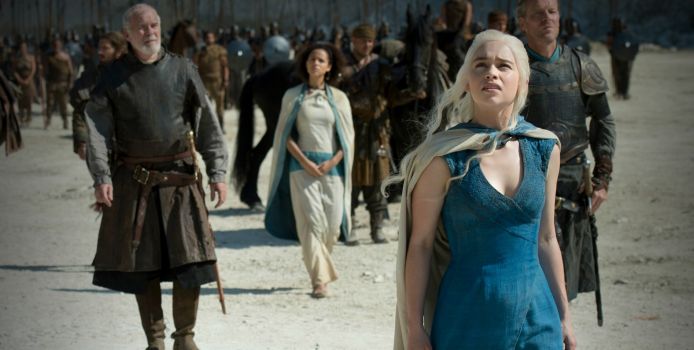
Massive film lover. Whether it's classic, contemporary, foreign, domestic, art,…
What is it about the fantasy genre that we find so fascinating? Is it the lure of escapism, the feeling of delight one finds being transported to the various textured habitats of places such as Middle Earth, Westeros, or Hogwarts? Or marvel over the depictions of fabled historical retellings that have taken on mythic qualities over the years? Arthurian Knights, The Crusades, warring pagan clans, or the great film adaptations of Shakespeare?
Do you ever notice how there seems to be two schools of fantasy films? On the one hand there’s the heroic, dignified type of fantasy films inspired by the works of J.R.R. Tolkien, and J.K. Rowling, These characters tend to ward off evil, rescue the world from the forces of darkness, and save the day, while maintaining a PG-13 rating throughout.
On the other hand there’s the darker side of fantasy, bad things happen to good people, others fight for what’s right and end up dying anyway (usually in a manner that wouldn’t merit a PG-13 rating), and whatever supernatural forces are present usually don’t work in anyone’s favor. There’s debauchery, sex, senseless acts of graphic violence, and harsh elements.
Now, if you were to place which school Game of Thrones belongs to, which school would you choose?
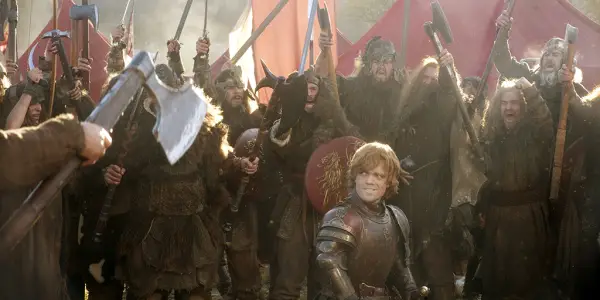
Although fantasy isn’t new to modern audiences, and comes in all forms and styles, the Game of Thrones TV series, based on George R. R. Martin‘s A Song of Ice and Fire novels, has elevated the genre to another level. It’s brimming with dirt, grit, grime, blood and sex. The stories of political intrigue, characters whose motives are either sinister, devious, or downright evil have the most screen time, and the dirtier your hands the more successful you become. It’s all about how you choose to play the game.
This vision of a darker side of fantasy is deftly executed, and the source material its drawn from is adapted to a superb level that will satisfy fans and newcomers alike. However, the concept of “dark fantasy” didn’t start solely with the advent of George R.R. Martin’s vivid storytelling. The goal of this article is to highlight films proceeding the series as it might pique the interests of fans of Game of Thrones regrading some titles that may have either inspired, or informed the style of the show.
8. A Bloody Round Table – Excalibur (1981)

John Boorman is known for creating some innovative and challenging films. Point Blank transplanted Lee Marvin (and film noir) into the psychedelic late sixties. Hell in the Pacific combined racial, and political tensions against the backdrop of an island survival plot, and his most daring film Deliverance, well…let’s just say I won’t go camping in the south ever again.
With his vivid, epic retelling of the King Arthur tale in Excalibur, he presented a whole new level of detail and vigor unseen in any depiction of the medieval age. Boorman wisely sidestepped historical accuracy, satisfying the visual aesthetic of iron-clad knights who abide by their code of chivalry. Another smart storytelling device was the melding of the Sword in the Stone tale with the story of King Arthur and the Knights of the Roundtable. The film bears the trademarks of the “traditional” historical epic, but Excalibur took the story and its style into some daring new territories.
Until this time, most depictions of period dramas were usually stagy, or talky Shakespeare adaptations. What Boorman did was bring the dirt and blood to the screen unlike anyone had before. Furthermore, the supernatural element is presented with great cogency to a degree that makes the films mysticism feel truly palatable. The magic isn’t some “spooky trick” conjured by a cloaked sorcerer, but a weighty, and dangerous element that is feared the same way primitive cultures would fear a fierce storm. Excalibur is also a very sexual film and in concert with the other new characteristics that this movie brought to the table its frank sexuality is a surprising but fitting piece to Boorman’s puzzle.
If you look at the style of this film next to Game of Thrones, you can see that the film and the show belong to the same family.
7. Overlooked – The 13th Warrior (1999)

The 1999 film The 13th Warrior might not be the best movie of the lot, but it’s still a solid title. Pitched with a tagline that read “From the Author of Jurassic Park, and the Director of Die Hard” the movie had some promise, and despite some plot holes and a shaky start, The 13th Warrior remains a well made, and effective work of dark fantasy.
For some reason, an exiled Arabian noble (Antonio Banderas) joins a motley brood of Vikings on their journey to confront a strange and dangerous threat. A deceptively simple premise plays out nicely as the Vikings, and their “13th” warrior make their journey. The film isn’t a mere bloodbath, and it devotes some time to creating its characters and setting, and the combat and action are well choreographed. The period atmosphere is well drafted, and photography looks great.
What makes it stand out is that it’s a film that doesn’t rely on history, popular legends, or a popular theme of any kind. The 13th Warrior has overtones of horror as the band of Vikings feud with what they think are cannibalistic monsters. John Mctiernen, responsible for the best original Die Hard films, tried his hand at period fantasy, and despite its flaws it is well directed and acted.
At times you can find connections between this film and the creatures that live beyond the wall of The Night’s Watch in the Game of Thrones series. Some critics might have sneered at this movie, but it has aged well and earned a place in the sub-genre of darker fantasy films.
6. Cathartic Tragedy – Macbeth (1971)
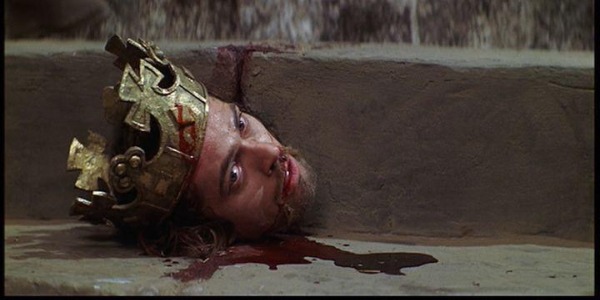
The Tragedy of Macbeth has been filmed various times, in various incarnations. Akira Kurosawa‘s rendition of Macbeth, Throne of Blood is a work of art, best known for an enigmatic performance from Toshiro Mifune being taken by a raining hail of arrows. But Roman Polanski didn’t adapt Macbeth, he directed a true and linear Shakespearean tragedy. Some might forget just how bloody, and violent Shakespeare’s work can be. And having said that, Macbeth has the body count that can still make today’s desensitized viewers squirm if it was portrayed faithfully, and that’s just what Roman Polanski did.
After the atrocities that surrounded the death of his wife, Polanski’s only way to reconcile the tragedy that occurred in his real life was to utilize his emotive power in his work as a director, and what better tragedy than Macbeth? Leaving the stuffy and confined stage for the expansive, Scottish landscape, the film is the first of any Shakespearean film that adequately captures the death and detritus that permeate the air of 11th century Scotland.
Parallels to Game of Thrones can be drawn back and forth with a film like this. The deception, treachery, and violence are at the root of Macbeth. It may seem easy to link any violent fantasy film to Games of Thrones, but Macbeth is a special case in that it chronicles the treachery and deceit by a protagonist driven by a possessed sense of naked ambition. The construction of Macbeth and it’s brutal depiction of corrupted ambition is so close to the framework of Game of Thrones that upon the films Criterion release this past year they referred to it as “The Original Game of Thrones” in their “3 Reasons” trailer/videos.
The brutality, and blind ambition of power by Macbeth and Lady Macbeth are so similar to the motives of the characters in Game of Thrones, this classic work could have been an influence. In any case, Polanski‘s vision of the Shakespearean tragedy must have had an effect on the style of the series.
5. Bloody Revenge – Conan The Barbarian (1982)

The wild man of the new Hollywood movement of the 1970’s, John Milius, is a famous screenwriter and director who rose to acclaim by writing the screenplays for movies like Apocalypse Now, 1941 and Jeremiah Johnson. His career as a director is less expansive, but his ambitions and vision are just as large as the characters he’s created and one of the largest, literally, and metaphorically would be Conan the Barbarian.
John Milius wasn’t shy when it came to depicting masculine themes, and old fashioned values of honor and dignity. A self proclaimed “Zen Anarchist”, whose political interests couldn’t be any further from his contemporaries of the counter culture influenced Hollywood. His hand as a director is commendable, and his adult fantasy epic Conan The Barbarian is not your average “sword and sandal” affair. The film is a graphically realized vision of a fictional past populated with murderous Cimmerians, sorcery, wizards, giant snakes, and bloody fighting. This film is the epitome of the dark side of fantasy. Opposed to the type of fantasy where the protagonists live in an otherwise utopian society, Conan the Barbarian draws from the lessons of history instead of pure fantasy. In the fictional world of Hyboria, innocent villagers are slaughtered, children are enslaved, people are brutalized in gladiatorial games, people die cruel deaths and honor is less than prominent.
First off, the casting of Arnold Schwarzenegger is key, Arnold’s screen presence is monumental and over the years has assured his status as an action star. John Milus and his machismo approach to film-making is straightforward, in concert with the films story, but loaded with imagination and a dark eye for what’s striking. Magic and sorcery are a factor and play out with a degree of credibility. Sometimes the illusion of magic can be reductive next to serious drama but in this film it plays out quite well. Although Conan the Barbarian isn’t the greatest film ever made, but it’s certainly an entertaining picture, with some truly imaginative set pieces, (watching Conan battle with a giant snake comes to mind), sorcery, and action to keep one’s imagination captivated.
4. Life and Death – The Seventh Seal (1957)

Imitated, studied, parodied, referenced, influenced, and never equaled, Ingmar Bergman’s The Seventh Seal is the quintessential art house movie of all time. The subject of almost every film class syllabus, and the “go to” title if you need to reference a classic “foreign” film. A very dense, and heady rumination of life, death, religion, and the nature of existence. What can be said about this film that hasn’t already been written, or discussed? Well, it’s connection to Game of Thrones might be one avenue that could be explored.
Its fair for anyone familiar with The Game of Thrones to say that death has a very strong presence throughout the series. Considering Death is an actual character in The Seventh Seal, as well as its medieval setting and dark tones, it’s hard to resist making that connection. Even the major Game of Thrones characters are usually dispatched with the blink of an eye, or killed in quantity and it’s usually presented in excruciating detail. After the second season you realize that death is very real to these characters, it doesn’t matter who they are, how much power they have, how much they are liked; death is inescapable, and no one is exempt.
However, Max von Sydow’s character Antonius Bloch engages Death in a game of chess, in the hopes that if he beats Death, he gets to keep his life. Throughout the film Bergman explores the ravages of the Black Death, and the religious fanaticism that accompanies the outbreak, and hysteria in the wake of the plague. Crucifixions, sadistic self flagellation, and other outmoded religious practices unfurl throughout the film, and Bergman’s anxieties and reservations about the nature of faith, and the appalling behavior it can instigate, are laid out before us, and would be a recurring theme throughout the rest of his work.
Although the two works couldn’t be more different, the themes, and setting have a naturalistic feel and strength. Death doesn’t emerge from a cloud of smoke, nor is there any special camera effects or tricks. Death is presented as a tangible and possible figure. Depicting death in such a manner enhances its realism and supports the idea that death is an elemental part of life. The same can be said for the succinct life span of the characters in the Game of Thrones series.
3. The Darkness of the Middle Ages – Marketa Lazarová (1967)
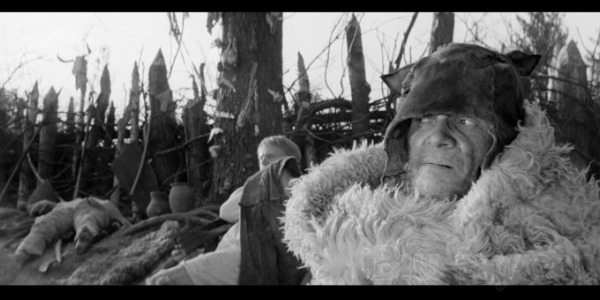
Thanks to the Criterion Collection’s ability to rediscover the occasional “lost” classic, we get to see great film’s like Marketa Lazarová. Restored and lovingly packaged, this release is a treasured spine number in Criterion’s long-running line of classic releases. Frantisek Vlacil’s film might require a bit more patience from the casual viewer due to its length and style, but the result is a stunningly crafted, and brutal depiction of the middle ages.
Marketa Lazarová doesn’t exist in a world of fantasy, but the feel Vlacil creates is far removed from anything we know about the thirteenth century that it has an aura of mysticism that might as well fall into the category of fantasy. The film’s narrative focuses on two feuding clans in a time when pagan ritualism was facing off with the expansion of Christianity. The film is radically expressionistic, filled with images of pelt-sporting pagans, a harsh snowy landscape, wolves, and bloody scenes of primitive combat. The narrative isn’t as linear as the intricately constructed work of George R.R. Martin, but Marketa Lazarová focuses on the exploits on the Kozlik family, who, like the House of Stark, are the descendants of wolves.
Furthermore, the works share an aesthetic sense of responsibility to portray the frequently harsh environment their character inhabit. Vlacil’s film presents a past to the viewer that is primal and cruel, the world created by George R.R. Martin may have luxuries but is also cruel and primal. The fate of its characters in Marketa Lazarova as well as Game of Thrones are not in the hand in the protagonists, but are the result of custom, or the means of survival. The predicament of Mikolas’ character in the film who falls for her captor and by lack of any other choice in life is similar to the predicament of Sansa Stark’s naive devotion to the abusive King Joffrey. The dysfunctional, and incestuous house of the Kozlik brood is echoed by the Stark and Lannister familial exploits. If Marketa Lazarová is a fictionalized presentation of the past, Game of Thrones feels like a creative interpretation of Frantisek Vlacil’s world.
2. Childhood is Hell – Pan’s Labyrinth (2006)

There have been many cinematic visions depicting the darker side of fantasy over the years, yet none of them have been as original or captivating as Guillermo del Toro’s Pan’s Labyrinth. Every film in his catalog shows tremendous growth and Pan’s Labyrinth might be the best example of a growth spurt in a visionary director’s career.
Fairy tales are commonly mistaken as children’s fare, but if you get to the core of well-known tales such as Hansel and Gretel, Snow White, and Alice in Wonderland, you’ll see they are quite dark, and cautionary object lessons. What Guillermo del Toro does so well in Pan’s Labyrinth is create a unique and original combination of dark fantasy and harsh realistic violence.
The imagination presented in this film is staggering, and the director utilizes his fertile imagination to great effect. Insect fairies, fauns, giant toads, and eyeless monsters are all a part of the fantasy work that the protagonists inhabits. Sometimes charming, other times terrifying, and always captivating.
Although this film might not flow in the same vein of the Game of Thrones series, but it shares its DNA as a great work of dark fantasy. Especially if you consider the political context in both Pan’s Labyrinth and Game of Thrones, George R.R. Martin’s work has a metaphorical approach, and Guillermo del Toro explores history directly. But both artists explore the darker side of the human seed to a great effect. Even if you are not a fan of the genre, it demands to be seen as there is something in it for everyone to enjoy.
1. Darker Side of Disney – Dragonslayer (1981)
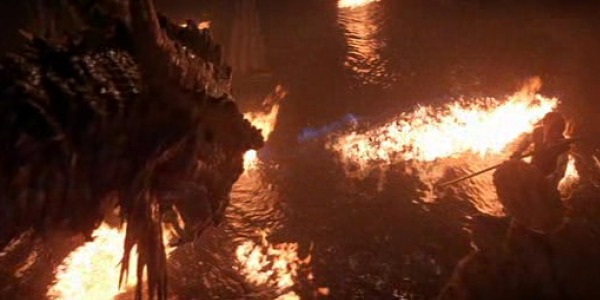
Dragonslayer, an overlooked and surprisingly dark Disney production, seems like one of those films that may not have reached a wide audience, but the cult around the film are loyal supporters, yours truly being one of its members. A sorcerer’s apprentice is sent on a mission to kill a dragon that has been terrorizing a small town in a fictional medieval age, this deceptively simple plot plays out rather well. Dragonslayer is a film that is conventionally constructed, well acted and boasts some great special effects thanks to Industrial Light and Magic.
First of all, don’t be fooled by the PG stamp or the Walt Disney brand on the film; it’s advertised as a family movie but is anything but. While Dragonslayer is indeed very straight forward and conventional, it still treads some dark waters. The visual effects are first rate, and the dragon is designed with great detail and steals the show unlike the modern day CGI laden monsters that fill the screens of today’s theaters.
What makes Dragonslayer an interesting compliment to Game of Thrones is the role the titular monster plays in both of settings. Game of Thrones begins in a world where dragons are the subject of myth and are believed to be extinct. However, when they do appear they are treated with great affection as their mother, the Mother of Dragons and Khaleesi Daenerys Targaryen, raises them to be weaponized and wielded as a symbol of power. The idea of utilizing a dangerous natural element or animal can be tied to various chapters of history, the creation of gunpowder, weaponized viruses or even the splitting of the atom. The story of Dragonslayer relies on a more simple device: dragons are bad because they kill people and they need to be stopped. Contrastingly, in Game of Thrones they are good for that exact reason.
Honorable Mentions – Other Influential Fantasy Films
Jason and the Argonauts (1963) – A classic fantasy film with multiple classic scenes that are paramount in the world of fantasy films. Ray Harryhausen’s stop-motion effects are incredible, fighting skeletons, six headed dragons, and giant statues come to life with convincing effect. A must see for any fan. Notice any connection between the statue of Braavos and the one in Jason and the Argonauts?
Willow (1988) – The eighties were a great decade for fantasy films, and Willow is among the most memorable. The collaboration between Ron Howard and George Lucas pays off and the film has great significance to those who saw the film around the time of its release.
The Princess Bride (1987) – Another charming entry from the late eighties string of popular fantasy films. Superior direction and a sense of humor make The Princess Bride a highly entertaining picture that plays on the tradition of fantasy storytelling and cinematic themes of movies before it.
Princess Mononoke(1997)- Almost every Hiyao Miyazaki film is fantasy-based, but Princess Mononoke might be one of the better examples, seeing as it’s one of his more heavy-handed films. It has an environmental message, and a limitless imagination that is consistent with the director’s work.
Legend (1985) – Depending on which cut and soundtrack you see/hear, this is yet another classic in the tradition of eighties fantasy. Director Ridley Scott elevated his 1979 film Alien from an average sci-fi film and did much of the same with Legend.
Clash of the Titans (1981) – A large-scale production in the mold of the Jason and the Argonauts-type of storytelling. Relying on classic Greek myths, Ray Harryhausen‘s wonderful effects recreate Medusa, the Pegasus, giant scorpions, and the sea monster Kraken. Later remade in 2010 where CGI replaced Harryhausen’s wonderful creatures.
In Conclusion
HBO’s Game of Thrones series isn’t just a success, but a worldwide sensation. Some people describe the show as “fantasy for people who don’t like fantasy”, but that’s a broad generalization. From printed page to the silver screen is a long road, and like many adaptations things can be lost, altered or changed along the way. But fans of Martin‘s work and newcomers alike seem to follow the series regardless. Either way, the series is wonderful, and when you’re into a series the drought in between season can feel like a drought. Hopefully these titles will rain down some entertainment to keep the fires burning.
To revisit the opening statement about there being two schools of fantasy: what is it that makes the darker side of the genre so appealing? Is it the political relationship in Game of Thrones that gives the series the edge that draws in viewers of all kinds? Or is it the dark vision George R.R. Martin being faithfully depicted?
And how badly are you dying to see the fifth season? Share your thoughts below!
Does content like this matter to you?
Become a Member and support film journalism. Unlock access to all of Film Inquiry`s great articles. Join a community of like-minded readers who are passionate about cinema - get access to our private members Network, give back to independent filmmakers, and more.
Massive film lover. Whether it's classic, contemporary, foreign, domestic, art, or entertainment; movies of every kind have something to say. And there is something to say about every movie.













